The velocity time graph of a ball of mass 20g moving along a straight line on a long table is given in (figure) How much force does the table exert on the ball to bring it to rest? 
The initial velocity of the ball is 20 cm s−1. Due to the frictional force exerted by the table, the velocity of the ball decreases down to zero in 10 s. Thus, u = 20 cm s–1, v = 0 cm s−1 and t = 10 s. Since the velocity-time graph is a straight line, it is clear that the ball moves with a constant acceleration. The acceleration a is
a=v−ut
=0 cm s−1 -20 cm s−1/10s
=-2 cm s−2=-0.02 ms−2
The force exerted on the ball F is , F=ma=(20/1000)kg×(−0.02ms−2)
=−0.0004N. The negative sign implies that the fricitonal force exerted by the table is opposite to the direction of motion of the ball.
Similar Questions
The velocity versus time graph of a body moving in a straight line is as shown in the figure below
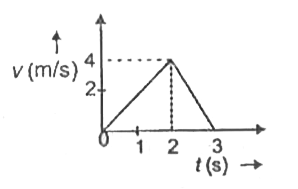
View SolutionThe velocity time graph of a particle moving in a straight line is given line is given in the figure. Then starting from t=0, the particle
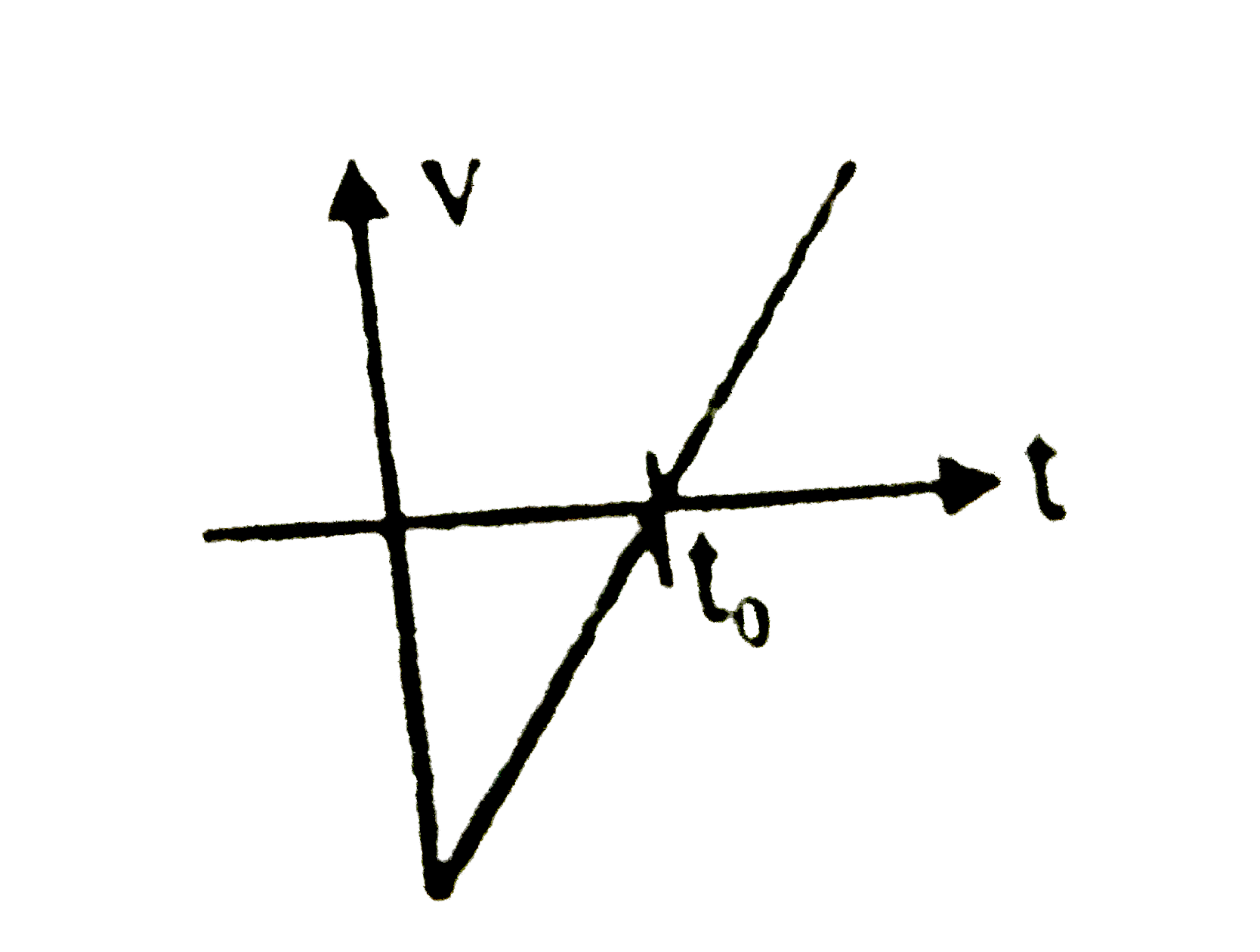
View SolutionThe velocity - time graph of a particle moving along a straight line is shown in the figure given below
The displacement of the particle in 5 second is
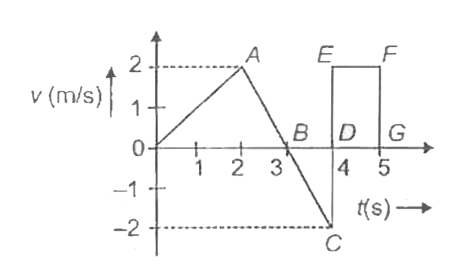
View SolutionThe velocity (v)-time (t) graph of a partide moving along a straight line is as shown in the figure. The displacement of the particle from t = 0 to t = 4 is
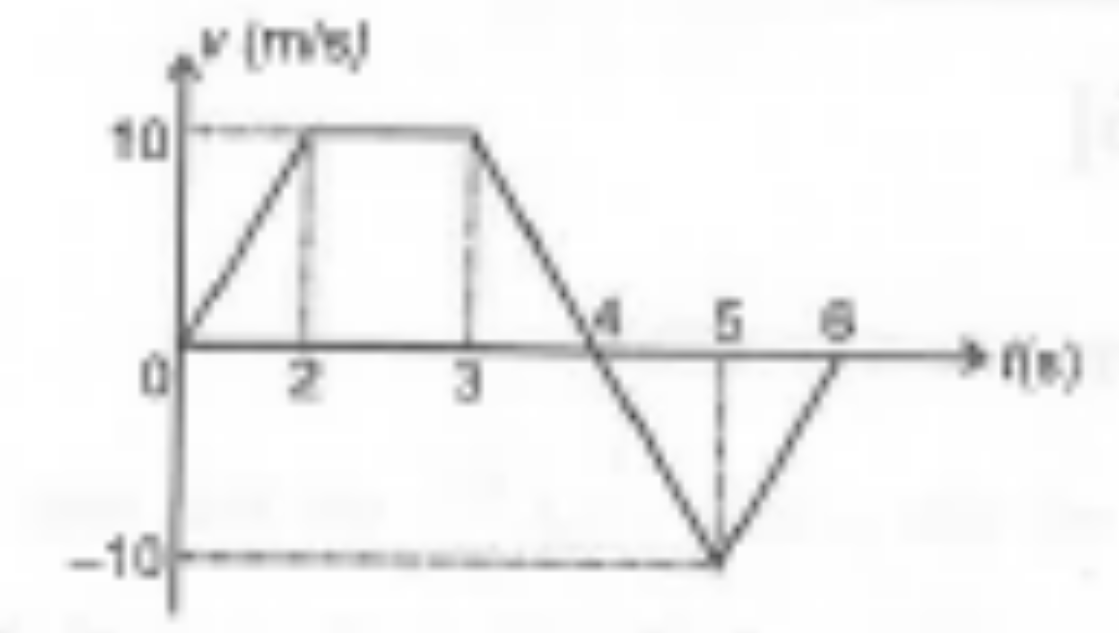
View SolutionVelocity-time graph of a particle of mass (2 kg) moving in a straight line is as shown in Fig. 9.20. Find the word done by all the forces acting on the particle.
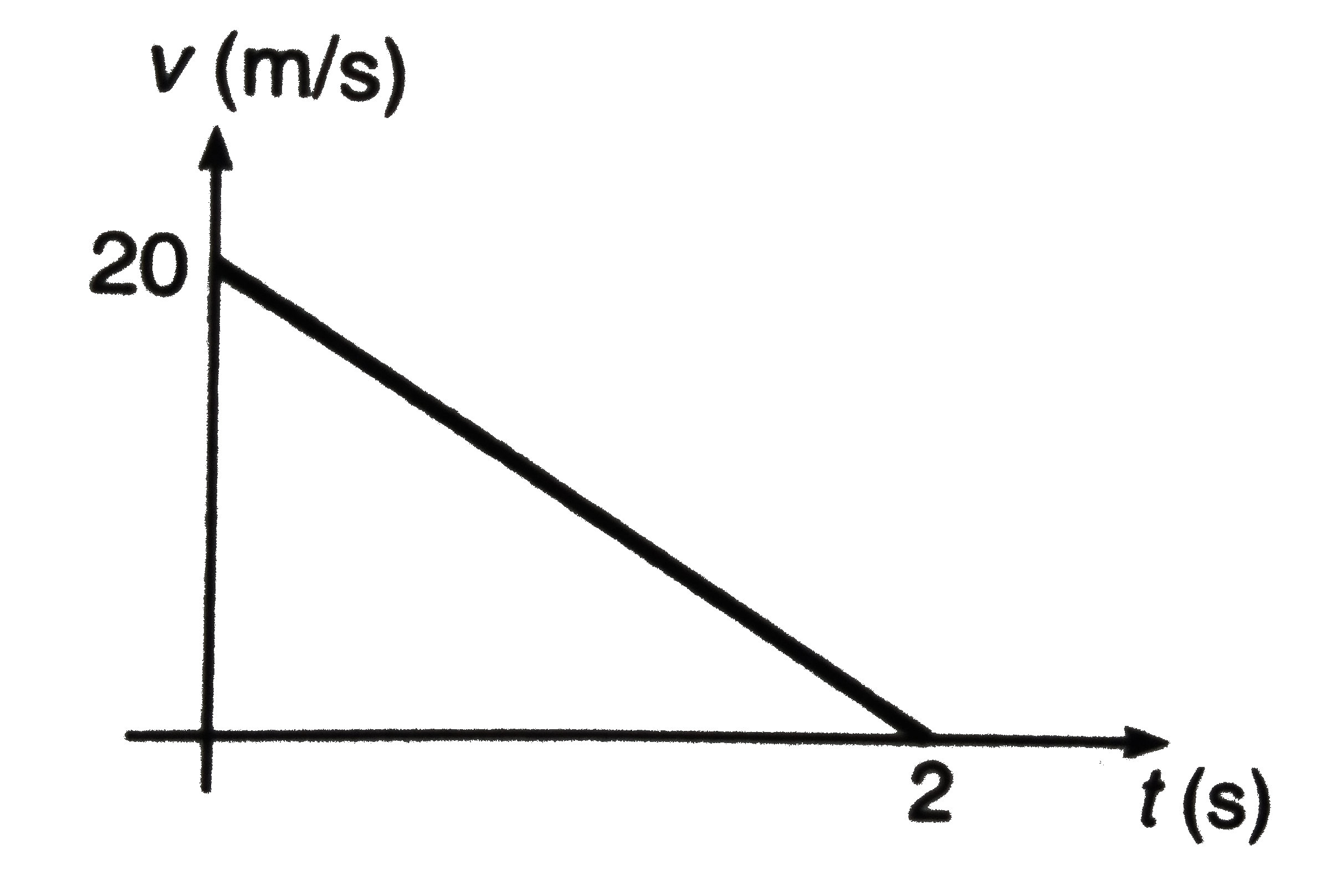 .
.
View SolutionVelocity-time graph of a particle of mass (2 kg) moving in a straight line is as shown in Fig. 9.20. Find the word done by all the forces acting on the particle.
 .
.
View SolutionThe figure shows velocity-time graph of a particle moving along a straight line. Identify the correct statement.
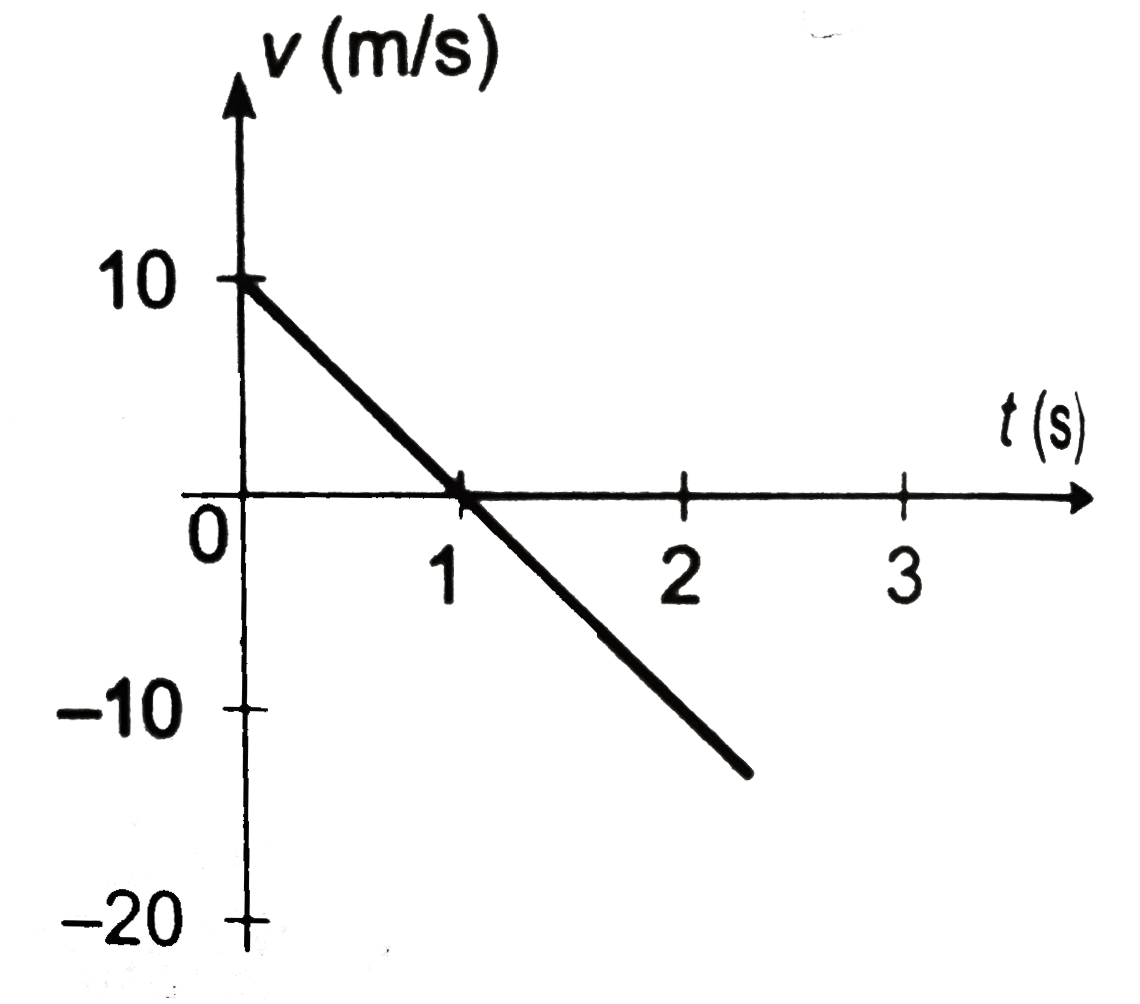
View Solution
The velocity displacement graph of a particle moving along a straight line is shown in figure.
Then the acceleration displacement graph is.
View SolutionVelocity versus time graph of a ball of mass 50g rolling on a concrete floor shown in (figure) Calcualte the acceleration and frictional force of the floor on the ball.
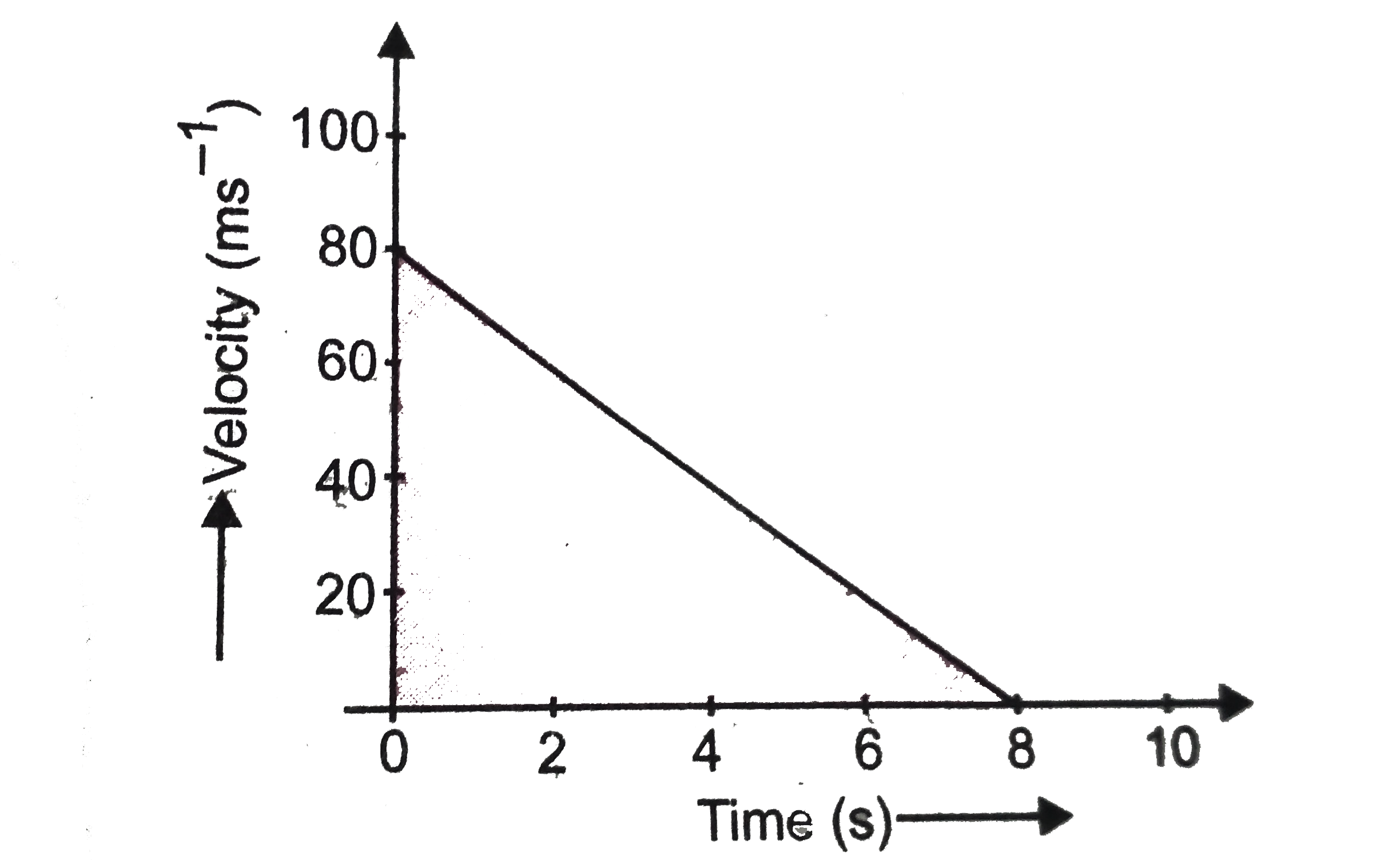
View Solution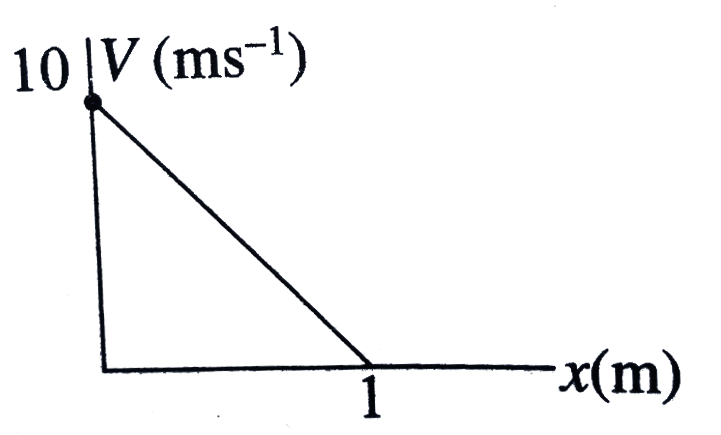
The velcocity displacement graph of a particle moving along a straight line is shown in figure. The velocity as function of x(0≤x≤1) is
View Solution
